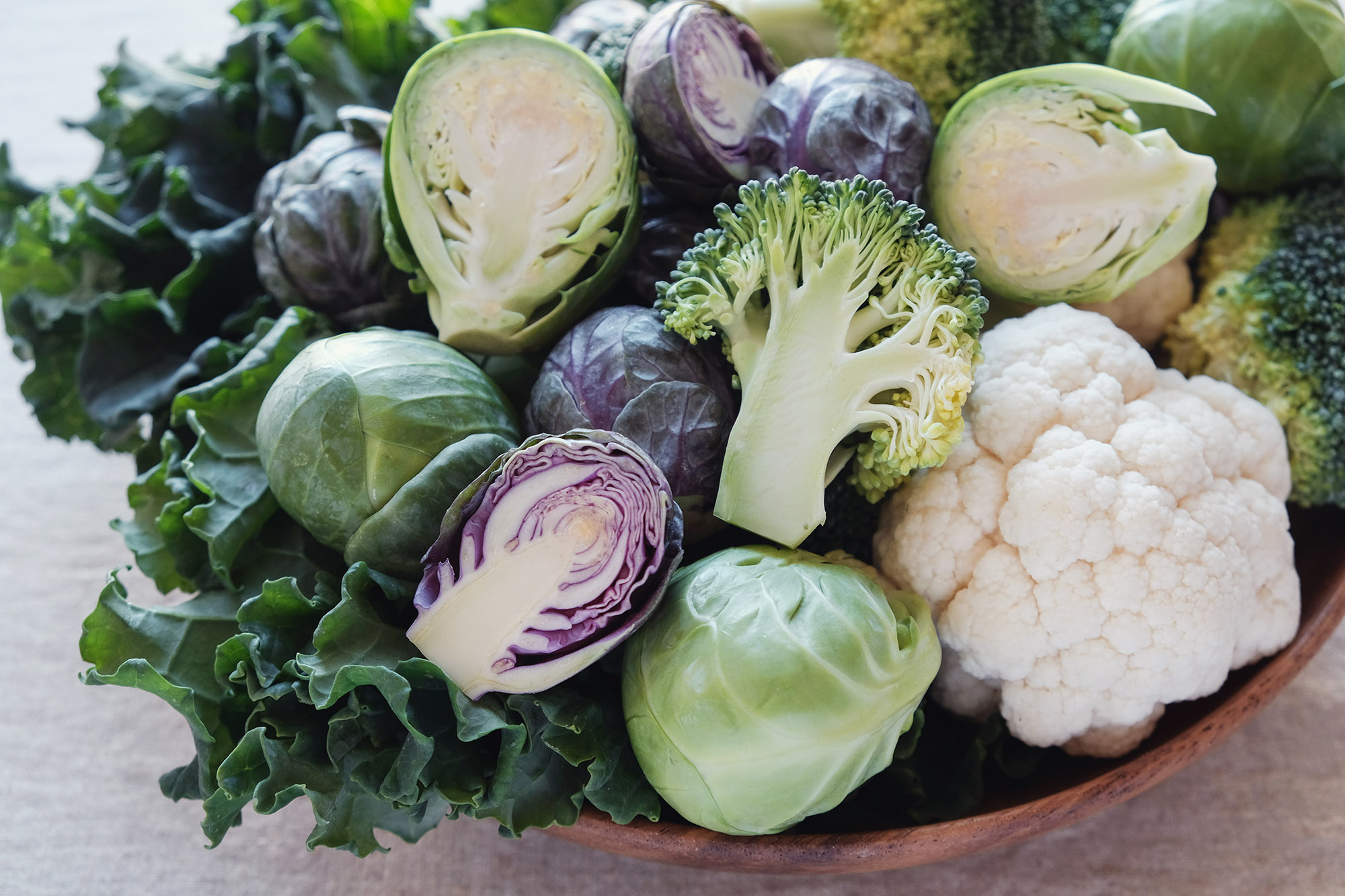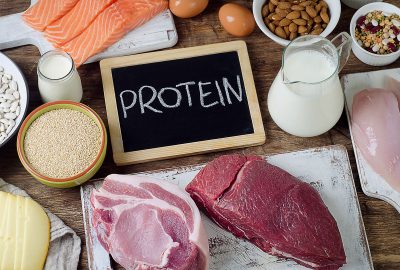Power Plants: The Benefits of Cruciferous Vegetables
Health | July 15, 2019
Ever receive the advice to eat more vegetables? Which, admittedly, I’ve been one to give? Well, after today’s post, you’ll come out with a ton of reasons why they’re so good for you! Because it’s one thing to simply hop on the bandwagon and accept things as they are. It’s another to take a step back and understand the reason(s) why they’re recommended to begin with. For today, I am specifically going to list out the many benefits of a type of vegetable known as cruciferous vegetables. These include broccoli, cauliflower, kale, Brussel sprouts, cabbage, and bok choy (just to name a few). I’ll also include a few recipes that are sure to entice your taste buds! Are you ready? Let’s get to it!
Cardiovascular Health
Veggies… they make a heart good. At least, that’s what a recent 2018 JAMA study shows. Otherwise known as the Journal of the American Heart Association, the journal published research that looked specifically at different types of vegetables and their effects on artery plaque (the buildup of which causes heart disease). It was found that for every 10 extra grams of cruciferous vegetables that were eaten per day, arterial thickness was reduced by 0.8%. Now, that may not seem like a lot at first glance, but what makes this stand out is that cruciferous vegetables were the onlytype of vegetables that could do this. [1] Additional research has also found correlations between diets high in cruciferous vegetables and low cardiovascular disease risk, concluding with the caveat that further research is needed to understand their potential; keep an eye on the research space! [2] [3]
Hormones
Ah, hormones. You can’t live with them. You can’t live without them. Right? Whether we like it or not, hormones are needed for us to function at our best. Sure, they can definitely be a nuisance whenever they’re imbalanced, but when they are, they work in harmony to help us feel young, energized, and strong (and that’s just the short list of things). That being said, whenever there’s an imbalance, things definitely go awry. While it’s important to work with your doctor to sort things out, your diet plays a huge role in maintaining order. And including plenty of cruciferous vegetables happens to be one of the best nutritional steps you can take to uphold it! That’s because they contain the compound known as indole-3-carbinole which, after digestion, is converted into diindolylmethane, or DIM. DIM aids in the metabolism and balanceof estrogen. In doing so, it can help to balance the ratios of estrogen to other hormones like testosterone. Many people suffering from both PMS and acne have found great relief from taking DIM, particularly if it’s hormone-related. Talk to the doc and see if it’s a good fit for you! [4] [5]
Cancer
Now that I’m on the subject of DIM, I’d be remiss if I didn’t mention it’s potential (and I use that word strongly) for preventing cancer. Clinical research published in Nutrition and CancerandFamilial Cancerboth suggest that DIM can help to block the growth of breast cancer cells, albeit in varying degrees. [6] However, the results were contradictory, warranting the need for further research. DIM has also been studied for its suggestive preventative effects against uterine, colon, prostate, and ovarian cancers, but once again, the data is still lacking in enough conclusive evidence. [7]
Antioxidants
Did you know that our body actually manufactures its own antioxidant? Yup, it sure does! Enter glutathione, the Master Antioxidant known for its ability to significantly lower inflammation and counter the damaging effects of pro-aging free radicals. Glutathione is produced by the liver and can be increased by consuming sulfur-containing foods. [8] Surprise, surprise, cruciferous vegetables just so happen to be rich in sulfur! [9] By incorporating cruciferous vegetables into your diet, you further increase the production of glutathione, thereby lowering inflammation, preventing premature aging, and building a natural resilience against many diseases and conditions. (By the way, in animals, it was glutathione-boosting cruciferous vegetables that showed any benefits. It turned out that just supplementing with straight up glutathione yielded absolutely zero benefits.) [10]
But the fun doesn’t stop here, folks! Cruciferous vegetables happen to be rich sources of anotherpotent antioxidant known as sulforaphane. Yes, their sulfur content not only encourages the production of glutathione in our bodies, it already enables the vegetables to come equipped with their own direct source of antioxidants, which includes sulforaphane. I’ve already written about the benefits sulforaphane (or rather, sulforaphane-rich broccoli sprouts), so for the sake of time, I’ll summarize them in brief. The benefits of this compound include potential anti-cancer effects (which are greater and more promising than even DIM), heart health, brain health, blood sugar regulation, sun damage protection, and bowel regularity. [11]
Detoxification
You guys know that I’m all about debunking trends these days, and detox is no exception. I’m not interested in dubious claims. Which is why I’m quite intrigued about the ability for cruciferous vegetables to support (not replace) our body’s natural detox mechanisms. Specifically, Phase II detoxification in the liver. That’s because they contain isothiocyanates (ITCs), which help to activate several enzymes that are involved in Phase II detox. Think of the different phases as computer programs requiring codes. Without the codes, it cannot function optimally. The codes in question come in the form of various vitamins, minerals, amino acids, and other nutrients. When we consume enough, our body receives the right coding in order to do its job. Even if we don’t regularly eat cruciferous vegetables, it can still obtain the codes from other sources. However, it could perform more efficiently or even quicker if we include additional or special codes from simple foods like cruciferous vegetables. In fact, the ITCs from cruciferous vegetables can actually boost the activity of other antioxidants like Vitamin C. So, consider these veggies as a way of supercharging your diet as well as supporting your natural detoxification mechanisms! [12] [13]
Chow Time!
OK, let’s get to the part that we’ve all been waiting for: recipes! I’ve got plenty for you to try out yourself. Snap a pic and tag me on Instagram so that I know you’re in the loop on my latest health tips!
Chicken and Veggies with Cauliflower “Alfredo” Sauce
Warm Broccoli Salad with Feta Cheese
Chili Cilantro Chicken Thighs and Sriracha Lime Cabbage
Garlic Lemon Brussels with Salmon
Spicy Kale and Coconut Stir FryCauliflower Risotto
Sources:
[1] https://www.medicalnewstoday.com/articles/321409.php
[2] https://www.ncbi.nlm.nih.gov/pubmed/21593509
[3] https://www.ncbi.nlm.nih.gov/pmc/articles/PMC4973479/
[4] https://examine.com/supplements/diindolylmethane/
[5] https://blog.bulletproof.com/benefits-diindolylmethane-dim-supplement/
[6] https://www.verywellhealth.com/health-benefits-of-diindolylmethane-89447
[7] https://www.webmd.com/vitamins/ai/ingredientmono-1049/diindolylmethane
[8] https://www.healthline.com/health/glutathione-benefits
[9] https://lpi.oregonstate.edu/mic/food-beverages/cruciferous-vegetables#introduction
[10] https://www.ncbi.nlm.nih.gov/pubmed/7739917
[11] https://www.healthline.com/nutrition/sulforaphane#food-sources
[12] https://www.ncbi.nlm.nih.gov/pmc/articles/PMC3264924/
[13] https://academic.oup.com/carcin/article/22/12/1987/2529942
















Comments Add Comment
Add a Comment